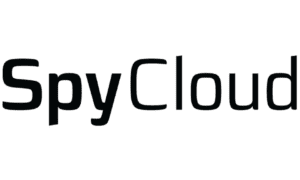Ransomware attacks pose a significant threat to businesses, particularly small and mid-sized companies that often lack robust cybersecurity measures. However, cost-effective strategies exist to reduce risk and minimize financial damage. “It’s about having a clear response plan, informed by risk assessments and strengthened by regular employee education and resourcing,” says J.R. Duncan, Founder and CEO of EquityTech Consulting LLC.
“Your plan doesn’t have to be perfect. You’re not making yourself impenetrable — that’s impossible. But you can make it difficult enough that you’re not an easy target,” explains Duncan, who works on the frontline of cybersecurity helping mid-size organizations build resilience against cyber threats. “It’s crucial to see a ransomeware attack as a business crisis, not an IT ticket,” says Duncan. The financial impact of a ransomware attack can be staggering, but with preparation and planning, businesses can significantly reduce their exposure.
The First Line of Defense: Communication and Containment
The first step in responding to a ransomware attack is containment. Given ransomware’s ability to move laterally across networks, swift action can significantly reduce the scope of damage and, by extension, the financial burden of recovery. “Whatever is touched by the malware — whatever is confirmed infected by it — unplug it,” he advises. Company culture and internal communication also play vital roles in ensuring a rapid first response. “It’s an attacker’s job to succeed one time. It’s in a defender’s job, which is very likely to be your everyday employee, to be perfect every time.” says Duncan. Ensuring employees at your organization feel empowered to speak up is essential. Open communication channels will enable your IT teams to react quickly and mitigate the damage caused by malware.
Third-Party Accountability is Essential For a Strong Cybersecurity Strategy
One of the most overlooked yet critical financial safeguards against ransomware attacks is cybersecurity insurance. “These attacks will not be affordable to recover from if you do not have cyber insurance,” says Duncan. Companies that adopt proactive cybersecurity measures, such as endpoint detection and response (EDR) solutions, can often negotiate lower insurance premiums. While there are many options out there, certain types of coverage matter more. “Make sure your policy will cover the cost of redeploying computers, restoring backups, and hiring specialists to recover from an attack,” he advises.
Not only will cyber insurance help your business recover, it ensures businesses fulfill their fiduciary duty to shareholders. “Your security posture will have to reach a minimum standard that will make it so that you can reasonably recover from these events,” says Duncan. “Not having a cybersecurity insurance means that you are not accountable to anyone except yourself and your own ideas”. Cybersecurity insurance will help you demonstrate your commitment to preventing these types of attacks to key stakeholders and protect your reputation.
Be Prepared With Backup Strategies and Tested Response Plans
A well-documented response plan is essential, but Duncan underscores that merely having one is not enough — it must be tested regularly. “Once a year, leadership teams need to conduct tabletop exercises where they simulate a ransomware attack and walk through their response plan step by step,” he explains. These drills ensure that every team member understands their role in the recovery process, reducing downtime and financial fallout when a real attack occurs.
“You have to be honest with yourself about how much data you’re willing to give up. If you are willing to lose a week’s worth of work, do your backups once a week. If not, your costs will increase ,” says Duncan, who urges companies to also consider the costs associated with protecting virtual desktops (VDIs). “Just because VDIs are cloud-based doesn’t mean they’re safe. You still have to back them up. You still have to manage it. If you aren’t paying for this protection, it’s not happening and you will lose it all in an attack.
Businesses that implement robust backup solutions can recover quickly without succumbing to ransom demands. “If you are in the position where you have to pay, you’ve already lost. It’s way better to spend that cash on whatever recovery efforts are needed to get back to where you were,” says Duncan.
Proactive Defense: Training Employees and Equipping IT Teams
Many ransomware incidents begin with phishing attacks, making employee training a crucial component of a company’s defense. “Your phishing training is way more important than you think,” Duncan says, advocating for routine testing and awareness programs to minimize human error. He also recommends the widely accepted 3-2-1 backup strategy: maintaining three copies of data, on two different storage types, with at least one copy stored offsite.
While many leaders acknowledge the importance of training employees in spotting risks, IT teams must also have the necessary tools to provide the best protection. “Do two things if you’re getting push back. First, come with a high, medium, and low option. The medium options is what you think they should do,” advises Duncan. “Secondly, come prepared with risk math for threats in your specific industry. A $300 subscription will pale in comparison to the millions a company stands to lose if caught unprepared, “ he explains.
Looking Ahead: Emerging Ransomware Threats
With AI-driven phishing attacks on the rise, Duncan warns that cyber threats are becoming increasingly sophisticated. For example, attackers are leveraging artificial intelligence to mimic executives’ voices, making social engineering attacks more convincing than ever. As these threats evolve, companies must continuously refine their security protocols and adopt advanced threat detection tools.
For more insights on safeguarding businesses against cyber threats, connect with Duncan on LinkedIn or visit his website for expert guidance on cybersecurity solutions.



































